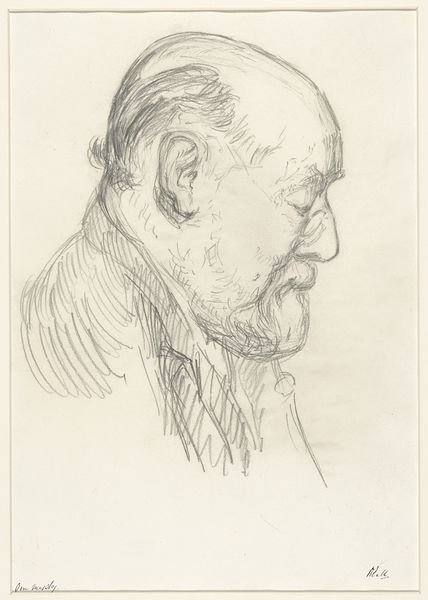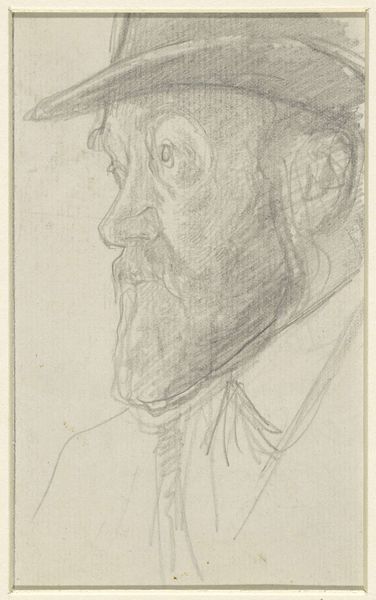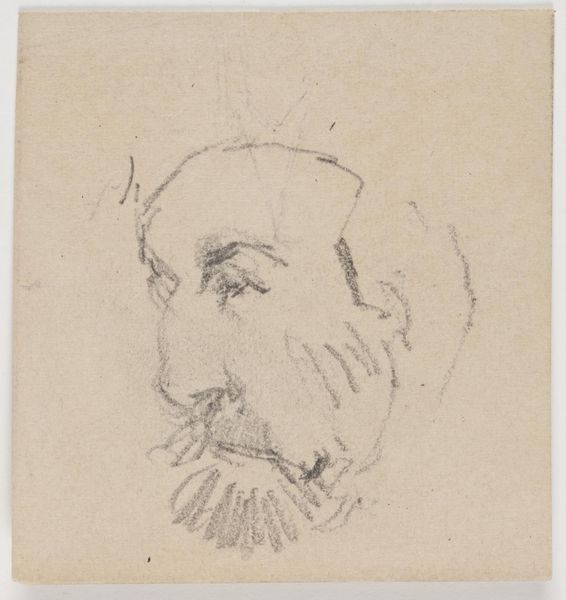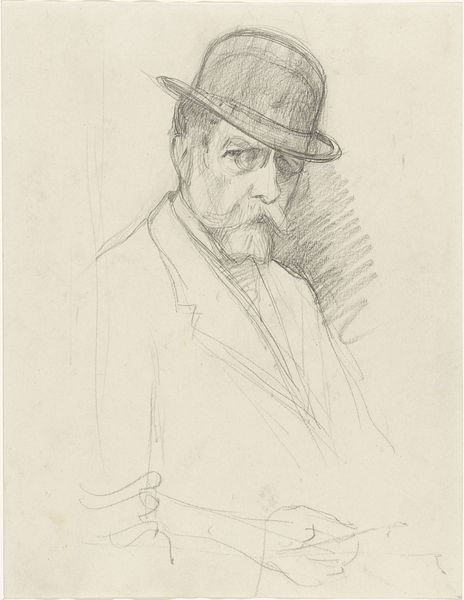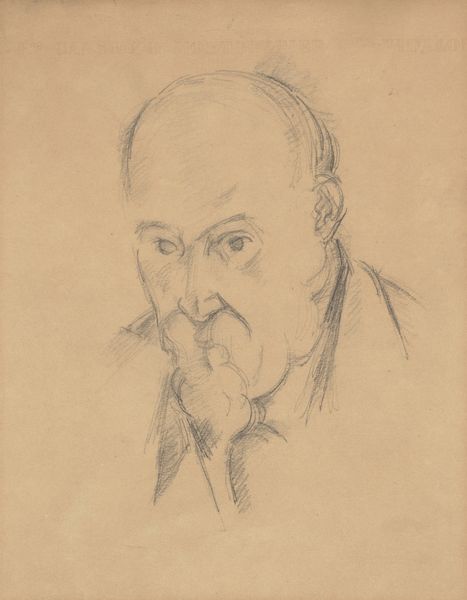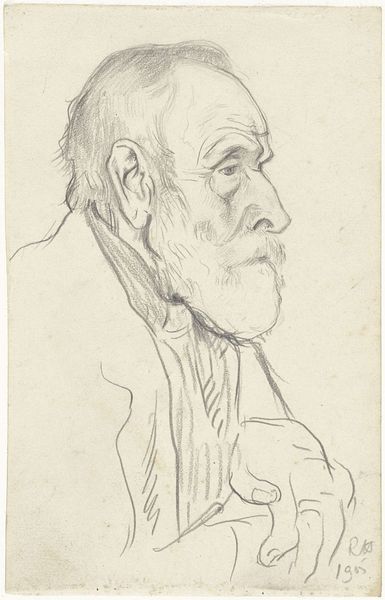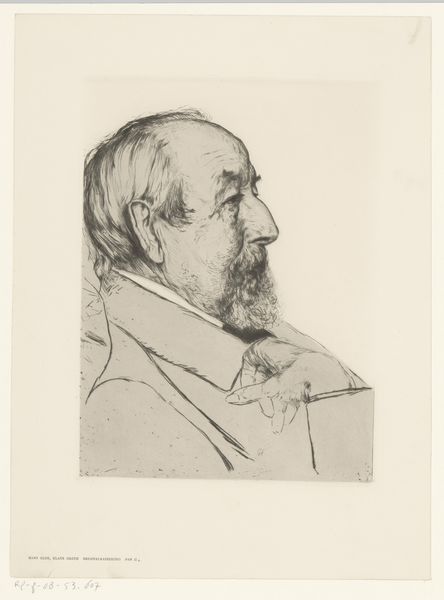![Self-Portrait [recto] by Paul Cézanne](/_next/image?url=https%3A%2F%2Fd2w8kbdekdi1gv.cloudfront.net%2FeyJidWNrZXQiOiAiYXJ0ZXJhLWltYWdlcy1idWNrZXQiLCAia2V5IjogImFydHdvcmtzLzA3ZGNmYzFlLTE0NWItNGE3ZS04MDljLTEzMzA5NzIyMTRiZS8wN2RjZmMxZS0xNDViLTRhN2UtODA5Yy0xMzMwOTcyMjE0YmVfZnVsbC5qcGciLCAiZWRpdHMiOiB7InJlc2l6ZSI6IHsid2lkdGgiOiAxOTIwLCAiaGVpZ2h0IjogMTkyMCwgImZpdCI6ICJpbnNpZGUifX19&w=3840&q=75)
drawing, graphite, frottage
#
portrait
#
drawing
#
self-portrait
#
impressionism
#
graphite
#
portrait drawing
#
frottage
Dimensions: overall: 22 x 12.5 cm (8 11/16 x 4 15/16 in.)
Copyright: National Gallery of Art: CC0 1.0
Curator: Here we have Paul Cézanne’s "Self-Portrait," a graphite drawing likely created between 1880 and 1882. What are your immediate impressions? Editor: There’s a striking immediacy. The sketch feels unfinished, raw even, yet it captures something profound in his gaze. The composition feels compressed; the figure dominates the available space. Curator: Cézanne’s self-portraits often serve as visual manifestos. He was working against the Salon system, the rigid art establishment of his time, and his work reflected that struggle for artistic freedom. These portraits explore how identity itself was being reimagined in late 19th century Paris. Editor: You see that rebellious spirit even in the application of graphite. Look at the hatching, the visible, directional strokes that build form. The very materiality declares itself, refusing to be subordinate to illusionism. He’s not trying to ‘finish’ anything in a conventional sense, rather making a statement. Curator: And the deliberate incompletion allows us, the viewers, to participate in the construction of the image. It parallels his larger project of challenging our perceptions, disrupting traditional hierarchies, and, socially, redefining what or whom should be considered worthy of portrayal in art. It challenged the establishment’s idea of the ‘ideal subject.' Editor: Indeed. Consider his use of frottage, to produce texture. It adds a certain psychological depth as if imprinting a mood directly into the work. Curator: His relentless experimentation paved the way for modern art, allowing it to reflect shifting social norms, not dictate them. Editor: Precisely! It shows the construction, as well as deconstruction, of portraiture conventions. One gets an evocative image, if not quite a clear view. Curator: In this work, Cézanne seems to say, "I am not just representing myself, but also representing the right to represent." Editor: A thought that truly reverberates as one views the stark yet compelling simplicity of line and tone on the paper. Curator: Exactly; this portrait is far more than a record; it’s a provocation, really, encouraging one to look beyond mere likeness.
Comments
No comments
Be the first to comment and join the conversation on the ultimate creative platform.

